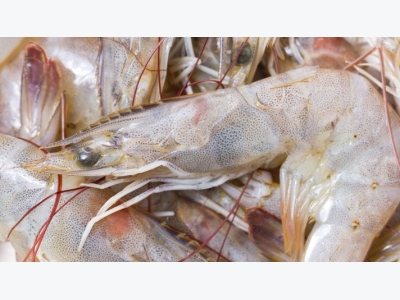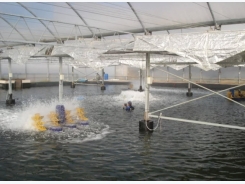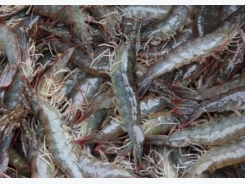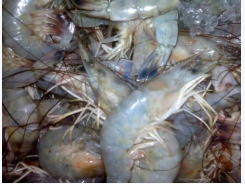Early Mortality Syndrome

Early Mortality Syndrome (EMS) or Hepatopancreatic Acute Necrosis Syndrome is a fairly new disease that affects shrimp.
The disease was first seen in China in 2009, before it spread to Viet Nam in 2010, Malaysia and Northern Borneo in 2011 and Thailand in 2012. In 2013, EMS was reported for the first time outside Asia, showing up in Mexico - due to imports of infected live shrimps from Asia.
Research by the University of Arizona has identified that the disease is caused by the bacterial agent Vibrio parahaemolyticus, which is transmitted orally and colonises the shrimps gastrointestinal tract. This then produces a toxin that causes tissue destruction and dysfunction of the shrimp digestive organ known as the hepatopancreas.
A research team from Kinki University and the National Research Institute of Aquaculture in Japan, have also identified the trigger for EMS. The team found that EMS manifests in ponds when there is an increase in pH to 8.5-8.8.
When and Where Might it Occur?
The disease has so far been confirmed in Asia where it has affected farms China, Malaysia, Thailand and Viet Nam. The disease has also been suspected in Mexico.
The disease appears during the first seven to 30 days after planting.
Diagnosis
EMS is characterised by high mortalities, with many cases reaching 100 per cent within the first 30 days.
- Clinical signs of EMS include:
- Erratic swimming or swimming near the bottom of the pond
- Reduced growth
- whitening of the hepatopancreas
- reduction in size of hepatopancreas
- Soft texture of the exoskeleton
- Dark spots or streaks on the hepatopancreas
- Hardening of hepatopancreas
Control/Treatment
- EMS-free broodstock are needed. Selective breeding for resistance to EMS would involve challenging families and selecting those with best survival as parents for the next generation.
- Improve farm practices. To eliminate EMS and other pathogens from water, establish a balanced microbial population, stock with healthy postlarvae and closely manage water and bottom quality. Disinfection with chlorine or ozone eliminates multiple pathogens. To create a mature microbial community, probiotics and polyculture can help condition water. Other suggestions were to maintain light to moderate bioflocs, avoid overfeeding and remove sludge regularly.
- Employ a nursery phase. Nurseries hold young postlarvae until they are larger and more robust, while also confirming they are free of EMS. Ten to 20 days in a nursery raceway, tank or net pen allows important physical and medical evaluations.
- Improve farm infrastructure with biosecure intensive ponds. Small, deep ponds covered with plastic or bird nets allow more manageable disinfection and feeding, as well as better control of water quality, bioflocs and sludge. Higher yields (30-50 mt/ha) can cover the extra investment.
- Identify feed additives that reduce the incidence of EMS. These could include quorum-sensing inhibitors, essential oils or immunostimulants.
- Integrated farm management is needed. Fragmented systems do not provide needed controls at each step in the production process. Zone management would avoid farm sitings with shared inlet and discharge canals, and consider the carrying capacity of ecosystems. Access to well-equipped local labs would provide better detection of EMS.
Related news
Tools

Phối trộn thức ăn chăn nuôi

Pha dung dịch thủy canh

Định mức cho tôm ăn

Phối trộn phân bón NPK

Xác định tỷ lệ tôm sống

Chuyển đổi đơn vị phân bón

Xác định công suất sục khí

Chuyển đổi đơn vị tôm

Tính diện tích nhà kính

Tính thể tích ao




 Global Shrimp Industry Depends on University of Arizona
Global Shrimp Industry Depends on University of Arizona  Novel protein shown to boost shrimp survival
Novel protein shown to boost shrimp survival